Living Planet
Nature · Earth · ClimateNature Notes: July 2021
BUTTERCUPS AND BEETLES
"I had a little beetle, so that beetle was his name
And I called him Alexander, and he answered just the same" A A Milne
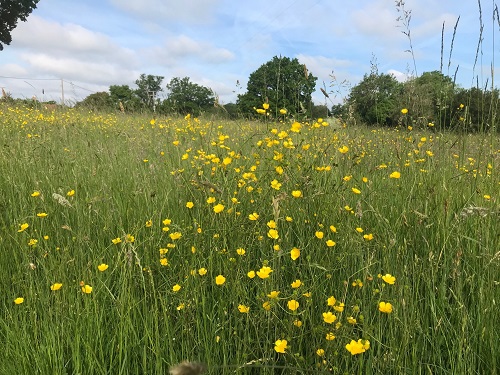
Dew beads and snails trails glisten silver in the early morning light as I wend along hard, dry, bare paths, where dog-roses have scatted their fragile, tender hearts. Knee-high, feathered grass fronds at field edges tickle my bare legs and as I dip into a cool, shaded, canopied paths, it's like suddenly submerging myself into a calm, fresh sea, wonderfully welcome even at this hour. But the apparent stillness belies the activity within, and I unintentionally dislodge insects from over-grown foliage and emerge into the sunlight again with a plethora of mini-creatures in my hair and the folds of my clothes ...
Insects may be all around us, all of the time, but this is perhaps the month that we notice them the most. Despite the delay of President Joe Biden's press flight to the G7 meeting in Cornwall in June, due to the 'billions' of Cicadas emerging from the soil in the USA (after 17 years underground), the global number of our insects - on land, in the air and in fresh water, are drastically declining. Caused by a mix of climate change, habitat loss and use of pesticides, their loss is potentially catastrophic for our ecosystems, pollination (needed by 87% of all our plant species and 3/4 of our crops) and our future survival. They also provide food for bats, birds, reptiles and mammals. You may have noticed a decrease in Blue and Great Tits nesting this year? The late arrival of spring led to a mismatch of timings between the hatching of moth eggs on oak trees, the delayed emergence of new leaves for the caterpillars to feed on and the birth of baby tits, which in turn usually live off the caterpillars.
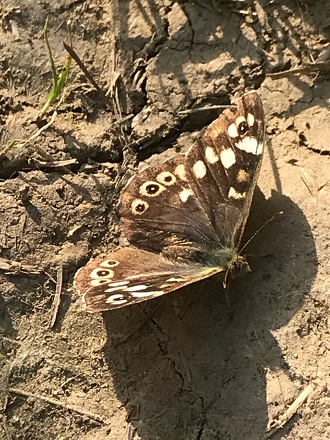
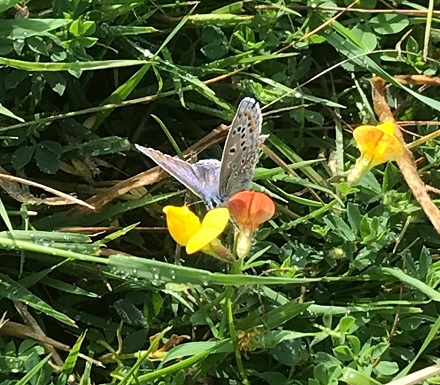

When summer did arrive in our village, it did so in full force! In the early June heat, vegetation sprang up everywhere, it seemed like a foot a night, and as the meadows were cut and bailed for hay before the impending thunderstorms, hundreds of winged creatures were in flight. Meadow Browns, Red Admirals, Ringlets, Gatekeepers and White Admirals fluttered over newly cut stalks and dipped in and out of shadier rides, amongst woodland on their periphery. Bright red and black Small Coppers and Silver-studded Blue butterflies and a 6-spot Burnet moth flitted upwards from amongst yellow and orange Birdsfoot Trefoil in the shorter grasslands of the old donkey field near Nowhurst. Often overlooked, striking varieties like the Garden Tiger Moth and a host of other beauties are already exercising their fragile, dust-like wings by day whilst the stunning Elephant Hawkmoths are around at night. Drowsy, tipsy, bumblebees are on numerous flowerheads, beautiful blue Demoiselle Damselflies gracefully glide around our streams and Scarce Chaser Dragonflies hover around the water's edge.
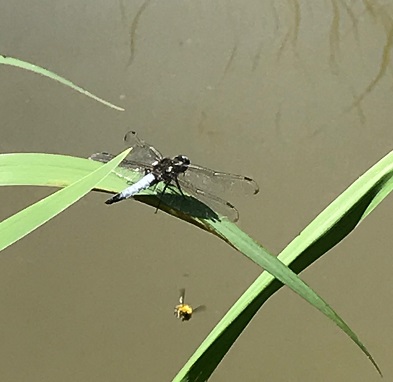
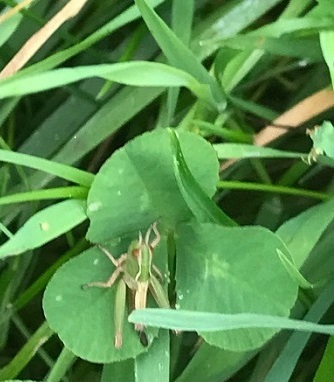
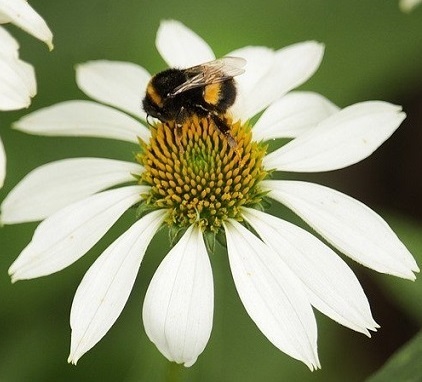
So what about our beetles, that have lived on earth since before dinosaurs? Did you know that despite a decline in their numbers, in the UK alone there are over 4,000 species? Whilst different types can be found all year round in an incredible variety of shapes, colours and sizes we seem to be more aware of them this month as they alight on flowers, patrol leaves, or whizz clumsily through the air and bump into lighted windows on late summer evenings (usually male Stag beetles that have emerged and are looking for a mate). They also play a vital role in indicating the health of our ponds, streams and fields, recycle decaying matter, pollinate plants, munch on aphids and snails and provide food for birds, hedgehogs etc.
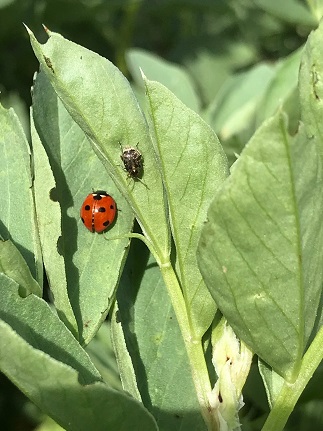
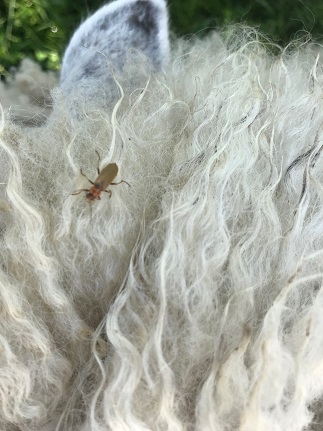
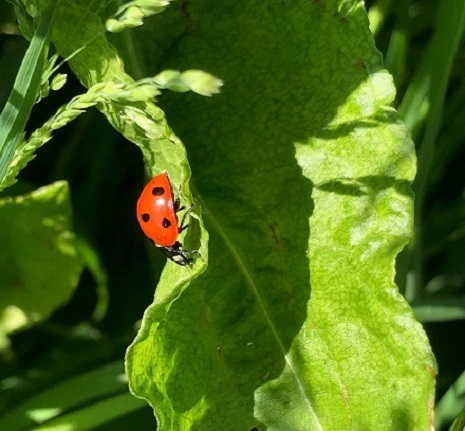
Buttercups welcome all manner of pollinators due to their numerous stigmas and this year they have been prolific - some varieties waist high and above so you can admire their visitors more closely! Tiny flea beetles have been swaying inside their golden cups, like freckles on droplets of sunshine, amid rippling seas of green. Beady red Ladybirds and somewhat translucent hoverflies have been supping from the same, and I've also seen different varieties of wasps, bees and flies.
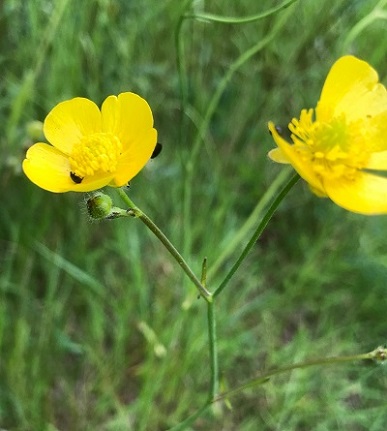
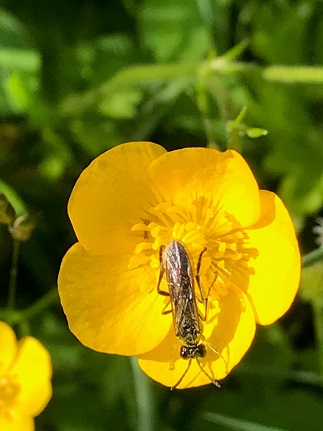
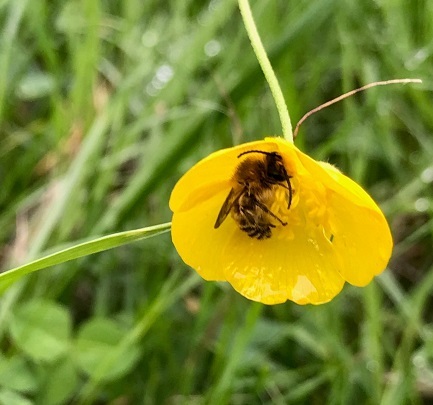
Elsewhere, iridescent emerald green and bronze Rose Chafers, gleaming in the sunshine, are feeding on the pollen of dogroses in the hedgerows; soldier beetles (or leather wings) in various colour combinations of black, red and orange, and the all-over blood orange of Cardinal Beetles march on blades of long grass, or up stalks to the crowns of cow parsley and ox-eye daisies; Long Horn beetles lounge on hawthorn flowers in hedges; Green metallic male 'Thick-legged' beetles (with thickened thighs that give the beetle its name) stand out dramatically, against the delicate pink of Bindweed flowers on the drive/footpath edges up to Crosby Farm; Dor dung beetles scurry amongst the grasses in fields grazed by cattle, and I even found a beetle snoozing in amongst the wool of one of the sheep; shield bugs too seemed to hang, motionless as if coats of armour against leafy-walls, whilst Whirlygig beetles seemed to be more active, doing just that on the surface of a neighbours' pond and the reeds in the Furnace lakes were populated by a plethora of reed beetles mating.
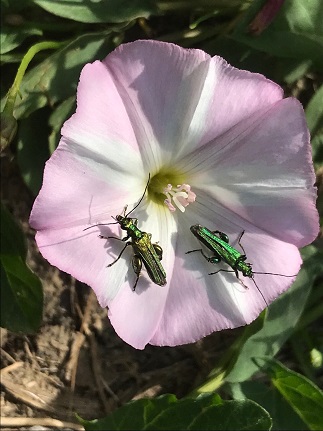
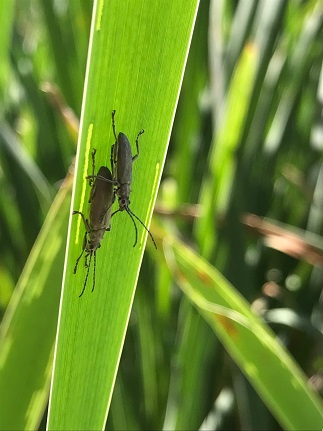
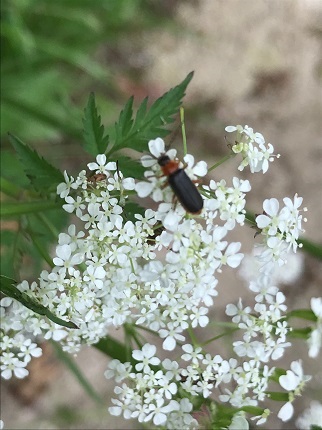
Some of the important pollinator beetles such as pollen and flower beetles are so tiny, you have to look very closely to spot them and I would recommend checking carefully and shaking well any late blooming Elderflower heads if you're making any cordial or fizz. The hard, shiny, black pollen beetles, are as small as pin heads and they seem to be 'stuck on' or perhaps they're 'stuck in' to the almost fermenting pollen!
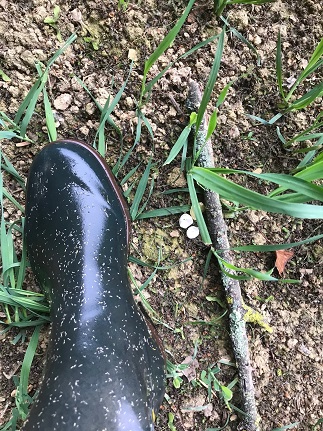

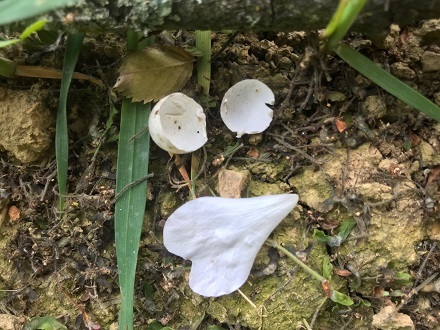
As I write, skylarks are bubbling away above and swifts are on the wing catching a variety of insects from the rising air, which they collect in the back of their throat and bind together in a ball with saliva before taking to their nests. I found two tiny white, brown speckled, Goldcrest eggshells in June - each only around 1+cm. One lay on a path alongside a hedge and as I stooped to look more closely I noticed an ant walking lightly nearby, making neither footprint nor sound, just humbly heading home with the food he/she had found. It made me think that we could learn to tread more lightly on the earth through the example of many of these smaller creatures with whom we share this planet. Wishing you all a buzzing, summer and happy holidays!
Footnote:
You can take part in the UKs 'Bugs Matter' citizen science survey running until 31st August 2021 by downloading the 'Splat app' and counting the number of bug splats on your car number plate. You can also take part in a 'Bring back our Beetles' campaign and learn out to Build a beetle bank, make a dead hedge and create a beetle bucket! The Big Butterfly Count takes place 16th July - 8th August 2021 if you need an excuse just to 'stand and stare and you can celebrate British Dragonfly Week from 18th- 26th July 2021.